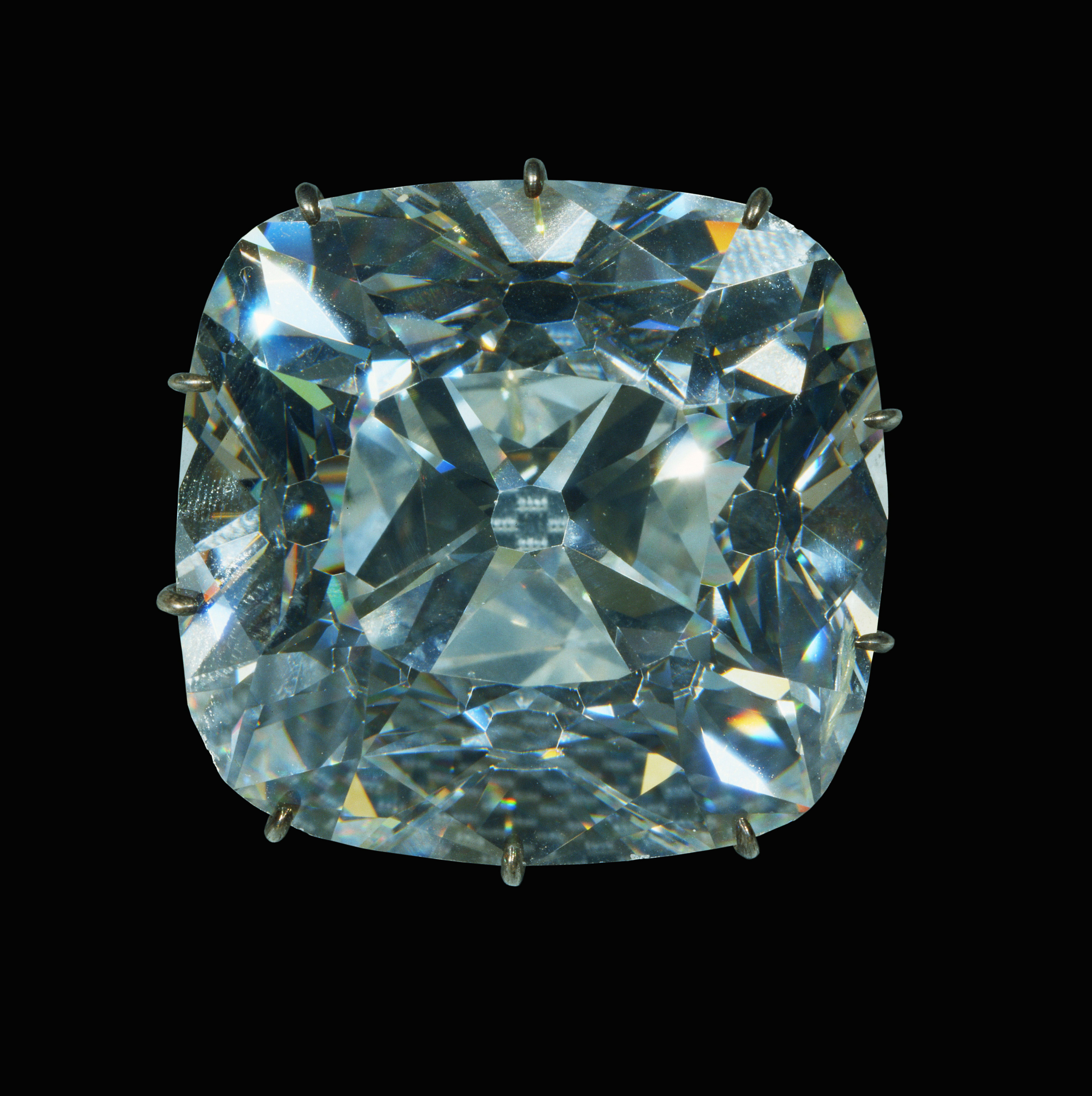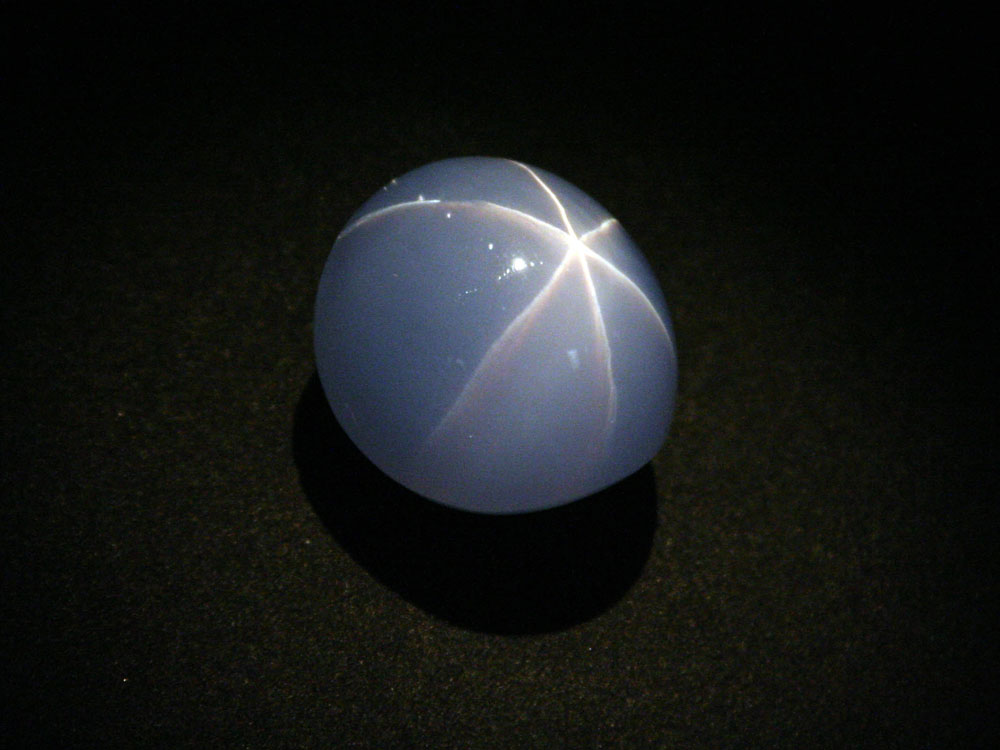Sinister Sparkle Gallery: 13 Mysterious & Cursed Gemstones
The Regent Diamond — The Pawned Pitt Diamond

The Regent Diamond was mined in 1701 in India and was 410 carats in its original, uncut form. Morbid myths surrounding the stone allege that it was found by a slave, who managed to conceal it inside a large, self-inflicted wound in his leg.
The myth states that after stealing the diamond from the mine, the slave conspired with an English sea captain to smuggle it away on his ship, but the captain then drowned the slave and sold the diamond, according to "Diamond Deposits: Origin, Exploration, and History of Discovery" (Society for Mining, Metallurgy, and Exploration, Inc., 2002).
An English governor named Thomas Pitt bought the diamond, which has a pale blue tint, and named it after himself. He had the diamond cut to its current size of 140.64 carats and sold it the French Regent Philippe II of Orleans in 1717. The diamond was renamed as the Regent, and the French royal family showed it off in several settings, including in the crown of King Louis XV.
In 1792, the Regent was stolen, but was located a few months later. The stone was later pawned to a Berlin jeweler to help raise funds for the French army, according to "Diamond Deposits." Napoleon Bonaparte, also known as Napoleon I, claimed the diamond back in 1801, having it set in the handle of his sword.
Following Napoleon's death in 1821, his widow, Archduchess Marie Louise of Austria, brought the diamond with her to Austria, but it was later returned to France as a present. The Regent then graced the crowns of Louis XVIII, Charles X and Napoleon III.
Currently, the diamond remains set in a diadem designed for the French Empress Eugenie, and is on display at the Louvre Museum in Paris, along with another gem on our list, the Sancy Diamond.
The Taylor-Burton — Bad Romance Diamond for a Good Cause

Another of Elizabeth Taylor's gems, the Taylor-Burton Diamond, which was mined in South Africa in 1966, was originally 240.80 carats; Harry Winston bought it and had it cut into its current 69.42-carat pear shape.
The diamond was put up for auction in 1969, and although actor Richard Burton bid on it, he was outbid by the owners of Cartier Inc., who paid a record price of $1,050,000 for the diamond and renamed it the Cartier Diamond. Determined, Burton worked out a six-figure deal with Cartier, purchasing the diamond from them under the condition that the company first display the stone in Cartier stores in New York and Chicago.
Burton then gave the diamond to Elizabeth Taylor for her 40th birthday during their first marriage. Originally, the massive sparkler was set in a ring, as shown in this still from the TV show "Here's Lucy," during an episode in which Taylor and Burton guest-starred. Taylor later commissioned Cartier to design and set the diamond in a necklace.
The couple renamed the stone the Taylor-Burton Diamond, and it served to represent their lavish lifestyle and larger-than-life relationship: the two allegedly fell in love while filming "Cleopatra" in 1963 — when they were both married to other people. The couple caused numerous tabloid frenzies throughout the years, with their relationship sometimes referred to as "the love affair of the century."
Taylor proudly showed off the Taylor-Burton Diamond at movie premiers and events, including Princess Grace's 40th birthday party in Monaco. After she and Burton divorced for the second time, Taylor auctioned off the rock in 1978 to an anonymous buyer from Saudi Arabia.
Reports of how much the diamond sold for range from $2 million to $5 million, but whatever the amount, Taylor used part of the proceeds to build a hospital in Botswana, Africa, at a site near where the diamond had been mined.
The Star Of India — The Stolen Star

The deep blue, oval star sapphire known as the Star of India weighs 563.35 carats. Unlike the other gemstones in this gallery, this star sapphire is a rounded, polished cabochon, rather than faceted.
The largest found blue sapphire in the world, the Star of India's origin is believed to trace back to Sri Lanka, where it was discovered an estimated 300 years ago. The stone's rare, characteristic star design occurred naturally. Tiny fibers of the mineral rutile aligned in a three-fold pattern within the gem, causing incoming light to reflect in a star pattern — an effect known as asterism.
In 1900, the Star of India was donated by industrialist J.P. Morgan to the American Museum of Natural History in New York. It was stolen from the museum in 1964, when a group of thieves left a bathroom window unlocked during the day and climbed in through the window at night.
At the time, the uninsuredStar of India was the only gem in the museum's exhibit that was protected by an alarm, but as luck would have it, the alarm's battery was dead, according to media reports. The men snatched the gem, along with several other precious stones that were on exhibit, and escaped back out the window.
The robbery was one of the biggest gem heists in American history, but the three thieves were captured within only two days. While some of the stolen gems were never seen again, theStar of India was miraculously recovered in a Miami bus station locker several months later.
The Star of India was put back on display at the American Museum of Natural History, where it remains on permanent display to this day — hopefully guarded by a more reliable alarm system.
Get the world’s most fascinating discoveries delivered straight to your inbox.


